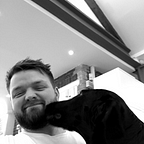Levelling up your Zoom workshops
Designing frameworks for great conversations in workshops is difficult. Creating a space to collaborate remotely feels like another game entirely. That’s because it is — but it’s not necessarily a bad thing. This article looks at 5 simple ways to inspire better remote collaboration and the resources to get started.
 Like me, you’re probably doing a lot of video calls right now. But apart from the — top half smart, bottom half strangely free while talking to clients, sporting a 3-month-old haircut — look and feel of it all, what I’ve found most compelling is how collaboration is influenced in remote workshops.
Like me, you’re probably doing a lot of video calls right now. But apart from the — top half smart, bottom half strangely free while talking to clients, sporting a 3-month-old haircut — look and feel of it all, what I’ve found most compelling is how collaboration is influenced in remote workshops.
See, it doesn’t matter if it’s 11pm in London or 3pm in Seattle, video calls have this inept ability to distract, frustrate and connect us. In other words, they’re a leveller and where in-person workshops are a chance to connect and collaborate through a collective experience. Remote workshops are the opposite. They disconnect us through many individual experiences. And fundamentally, it’s this disconnection that hurts how we collaborate remotely.
Thankfully, a better conversation for remote collaboration was already bubbling. Now it’s at the surface, we have insights and resources from companies like Miro, more experimental learnings from initiatives like From The Futures or remote workshops and talks dedicated to solving remote problems, all at our disposal.
The following is simply a few of these examples and learnings combined that I’ve had the opportunity to try, test or experience through Zoom workshops. Each of them has either made an impact on an outcome, inspired better collaboration, or honestly — just created a more human time of it all. I hope they are useful to you.
1. Renew your concentration on outcomes
The challenge for Zoom workshops isn’t about competing for attention between back-to-back meetings. The problem lies in being able to navigate the session towards outcomes that make people want to give their attention.
A renewed concentration on outcomes isn’t to reiterate them but to reframe them to be more focused, achievable and understandable for the context of your remote workshop. You want the outcomes of remote sessions to feel immediately valuable to the people spending their time on them. It’s about setting the scene appropriately and making it as easy as possible for everyone to come along on the journey, together, in a collective experience.
When talking about outcomes post-remote workshops, the most compelling thing I’ve found so far was that broad outcome statements that set the tone of the workshops aren’t clear enough. Participants, regardless of the workshop being remote or not, want to be able to trade their time with value. That’s why reframing outcomes for remote workshops, so their value is understood, is so important. If you are finding this difficult, do you need the workshop at all?
2. Don’t feel bad for embracing the chaos
Excellent preparation and onboarding is the (not so) secret sauce of embracing the chaos of remote workshops. It doesn’t matter if the workshop is an hour-long, or part of a much bigger remote sprint — smart preparation helps you plan B,C,D and E — while onboarding participants kickstarts remote working relationships.
Smart preparation, from gathering insights from teams to pre-fill exercises to knowing which participants will work best with which, should be part of any great remote facilitators toolkit. Onboarding participants individually through interviews, or at the start of workshops, to the tools and format of the sessions is an excellent way of gathering some of these insights, set expectations and levelling the playing field before the get-go.
AJ&Smart go one step further before they start remote design sprints. They use a google form to gather insights from members of the team they are about to carry out individual interviews with. This information helps them be honest, upfront and prepared for project-specific and tech-specific difficulties in their sprints.
3. Never start with a blank canvas
Embracing the chaos is a helpful mindset to make any facilitator more comfortable during remote workshops but having the ammo they need kickstart collaboration at any given moment is slightly more practical.
Insights from the onboarding processes mentioned above are essential here. They can be collected from participant interviews or by your co-facilitators in the warm-up discussions of the workshop itself. By actively using what you learn and preempting the use-fullness of the knowledge, you’ll have the tools you need to kickstart collaboration when engagement is slowing down or when the conversation needs refocusing.
Additionally, I’ve found that when using insights or existing problems to pre-fill workshop materials it is a lot easier and less intimidating for participants to add to (and tweak) than to fill an empty workspace. Again, there are some great templates and starting points on Miro’s community template gallery.
4. Always fill the voids
Voids in remote work can best be explained with the wifi delayed laugh to the jokes you can only find in small talk. Even for the most welcoming or closest of teams, when working remotely, voids become even more prominent in uncomfortable silences, delays or during activities.
There’s a bunch of subtle actions to try and figure what works best for you and your team when it comes to filling these voids. It could be music during silent activities. It could be something more straightforward like decreasing the channels you are working in so that participants don’t have to swipe between screens so often. Or it could be ensuring no one is ever muted, so chat can always surface. Whatever your poison, it takes some practice to find what your teams are most comfortable with.
At Wilson Fletcher, we started by adding music while we were working together in silence — it helped create a more collective experience and ease us into getting more comfortable working silently over video. We also made it a priority to have at least a 1/3 of a screen taken up by Zoom itself and a dedicated channel for conversations or questions over text. Having faces on display and a place to share thoughts freely is essential to our remote work. Tellart use these principles to create some super interesting remote experiments.
5. Don’t manage everything
Remote sessions are (and understandably should be) shorter and more intense. Instead of worrying about the ‘zoom fatigue’ though, I feel its an opportunity to various explore ways to engage people and build better relationships. That’s why it takes more than just the facilitator to run a successful remote workshop.
A single facilitator won’t ever be able to control the pace of a remote workshop with any rigour or empathy by themselves. By having other members of your team take up roles that 1. manage the people rather than the process and 2.cover everything technical. It frees up more time for the ‘showrunner’ to focus on the process and move towards the outcomes of the workshop. Having others help you understand participants engagement and reaction to the pacing of the workshop gives a facilitator more time to synthesise, pivot and manage the overall workshop.
Breakout rooms are fantastic for kickstarting collaboration and switching up the pace when the going gets tough in large groups. A variation in pace and format is what can keep participants enticed. Breakout rooms of 3 or 4 participants, each with a facilitator from a member of your team, gives participants a chance to ‘stretch their legs’ remotely and creatively. Other facilitation tips like this can be found in this article on remote design sprints.
If you can design a great conversation, you’re halfway there.
Arguably these are all things that should be (and are) considered for any great in-person workshop, but context is essential. These simple suggestions are small but can have the power to make a lasting impression when you encounter the complexities of remote working. That’s why we need to keep building on this conversation, so that we can design better workshops, continually realign our fundamentals and do our best work.
Oh, and also — here is a spreadsheet of a bunch of cool remote design sprint resources compiled by Jake Knapp, John Zeratsky, and Jackie Colburn:
Thanks for reading — I’m always super keen to continue the conversation so hit me up on Linkedin or at jackstrachan.co.
